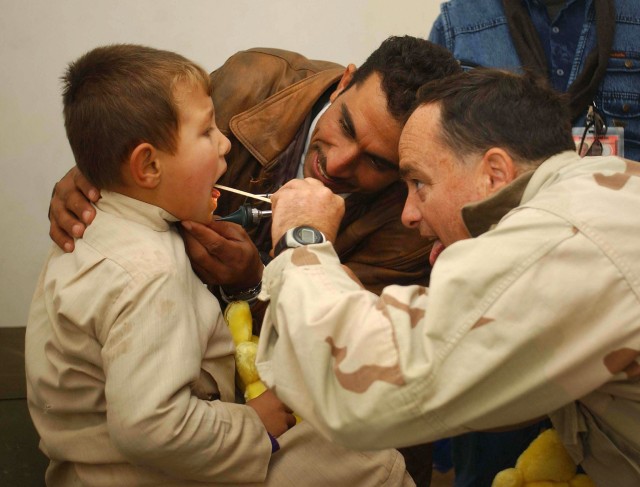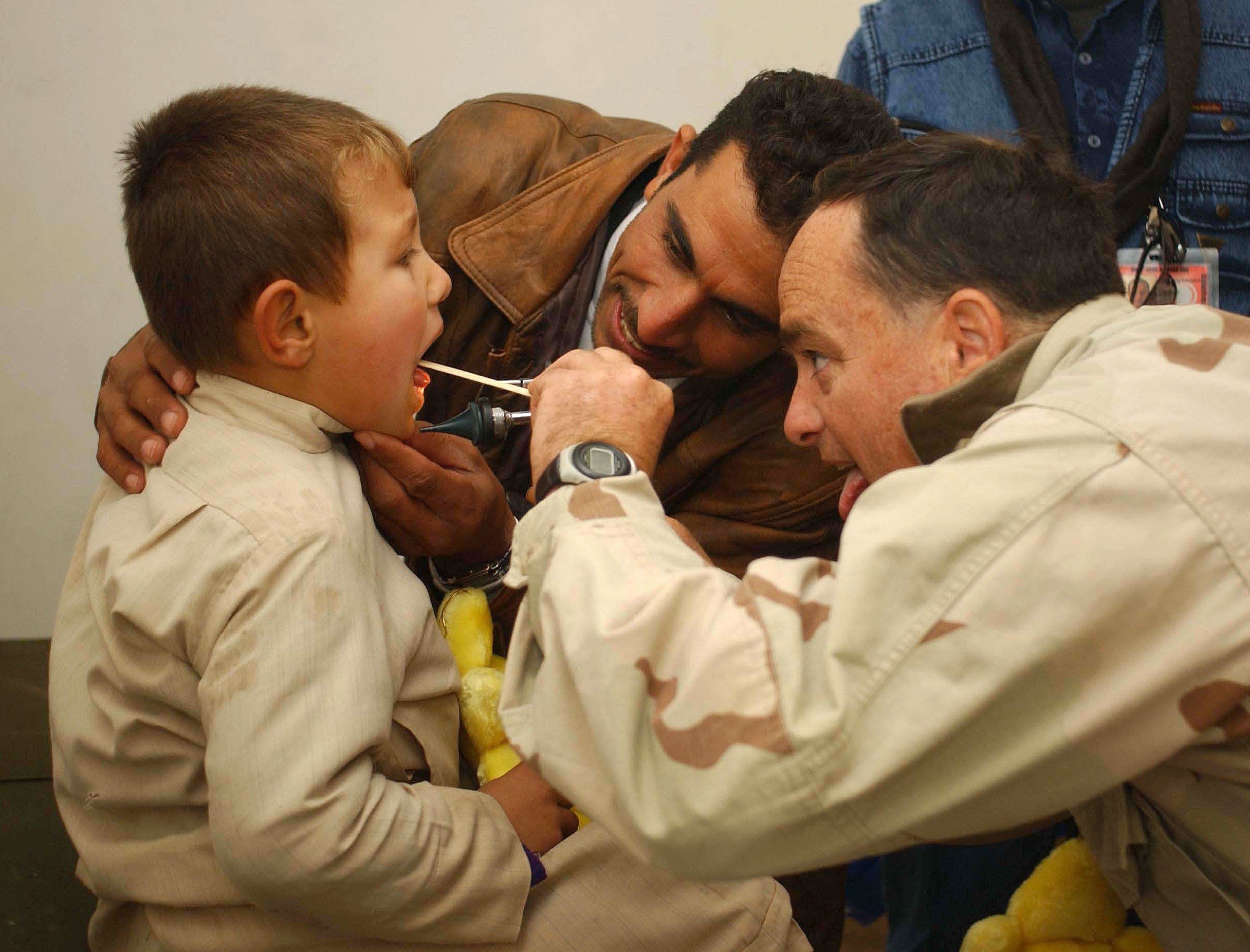
The surgeon general of the Iraqi Armed Forces visited Walter Reed Monday to get a behind-the-scenes look at the world-class health care provided to America's war wounded.
"You are taking care of these people in a very good way," Brigadier General Samir Adbullah Hassan said to Walter Reed Health Care System commander, COL Virgil T. Deal and COL Charles W. Callahan, deputy commander for clinical services, as they escorted the general through the hospital.
Hassan attended Iraq's Almustansiriyah Medical School, which is Iraq's oldest medical school. He later served in the Iraqi Army as an orthopedic surgeon.
Hassan said he was a patient at Walter Reed a few years ago and was impressed by the quality of care he received.
During a command briefing in the hospital, Hassan said, ''I knew of Walter Reed as a child. It is famous all over the world."
"How many staff do you have working here' About 3,000," Hassan asked. When he was told the current staffing at Walter Reed was about 5,000, the general raised his eyebrows in amazement. He said he was impressed by the size and scope of the medical center.
Hassan's orthopedic medical training enabled him to ask a barrage of very specific questions with Walter Reed's Orthopedics and Rehabilitation staff as he toured physical therapy, occupational therapy, prosthetics, the gait lab and the 3-D Medical Applications lab.
In Walter Reed's Amputee Physical Therapy Clinic, CPT Matt Scherer told Hassan of several wounded warriors, including amputees, who have returned to duty in Iraq.
"Really' They go back to Iraq'" Hassan asked Scherer.
While Charles Scoville, of Orthopedics and Rehabilitation, showed Hassan the various hi-tech prosthetic knees, legs, ankles and feet worn by the war wounded here, the general said that Iraq does not have many upper extremity amputees, rather a large number of Soldiers who have lost their legs.
When Scoville showed Hassan the latest in prosthetic ankle technology that Walter Reed acquired a few weeks ago, the surgeon general said, "I'm lucky to see it."
In the 3-D Medical Applications lab, Dr. Stephen Rouse and Dr. Erge Edgu-Fry showed Hassan various 3-D models created from computed tomography and magnetic resonance imaging scans of some of the war wounded and other patients treated at Walter Reed.
Rouse explained how much more comprehensive 3-D models are compared to traditional CT and MRI images. "In Baghdad we are still using the planning slice," Hassan said. A planning slice is a 2-dimensional cross section view from a series of CT or MRI images.
"We have CT, but it would be nice to have this stuff," Hassan said.
When Deal asked if Iraq has plans to build a new military hospital, Hassan responded, "Iraq has an old military hospital that needs extensive reconstruction-$23 million U.S. dollars."
Once Iraq is secure the general said Iraq would follow the British practice of having military staff co-located in civilian hospitals. "The U.S. really needs military hospitals because you have so many forces all over the world."

Social Sharing